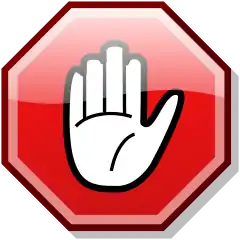SRD:Overrun
Overrun
You can attempt an overrun as a standard action taken during your move. (In general, you cannot take a standard action during a move; this is an exception.) With an overrun, you attempt to plow past or over your opponent (and move through his square) as you move. You can only overrun an opponent who is one size category larger than you, the same size, or smaller. You can make only one overrun attempt per round.
If you’re attempting to overrun an opponent, follow these steps.
Step 1
Attack of Opportunity. Since you begin the overrun by moving into the defender’s space, you provoke an attack of opportunity from the defender.
Step 2
Opponent Avoids? The defender has the option to simply avoid you. If he avoids you, he doesn’t suffer any ill effect and you may keep moving (You can always move through a square occupied by someone who lets you by.) The overrun attempt doesn’t count against your actions this round (except for any movement required to enter the opponent’s square). If your opponent doesn’t avoid you, move to Step 3.
Step 3
Opponent Blocks? If your opponent blocks you, make a Strength check opposed by the defender’s Dexterity or Strength check (whichever ability score has the higher modifier). A combatant gets a +4 bonus on the check for every size category he is larger than Medium or a –4 penalty for every size category he is smaller than Medium. The defender gets a +4 bonus on his check if he has more than two legs or is otherwise more stable than a normal humanoid. If you win, you knock the defender prone. If you lose, the defender may immediately react and make a Strength check opposed by your Dexterity or Strength check (including the size modifiers noted above, but no other modifiers) to try to knock you prone.
Step 4
Consequences. If you succeed in knocking your opponent prone, you can continue your movement as normal. If you fail and are knocked prone in turn, you have to move 5 feet back the way you came and fall prone, ending your movement there. If you fail but are not knocked prone, you have to move 5 feet back the way you came, ending your movement there. If that square is occupied, you fall prone in that square.
Improved Overrun
If you have the Improved Overrun feat, your target may not choose to avoid you.
Mounted Overrun (Trample)
If you attempt an overrun while mounted, your mount makes the Strength check to determine the success or failure of the overrun attack (and applies its size modifier, rather than yours). If you have the Trample feat and attempt an overrun while mounted, your target may not choose to avoid you, and if you knock your opponent prone with the overrun, your mount may make one hoof attack against your opponent.
Back to Main Page → 3.5e Open Game Content → System Reference Document → Combat

